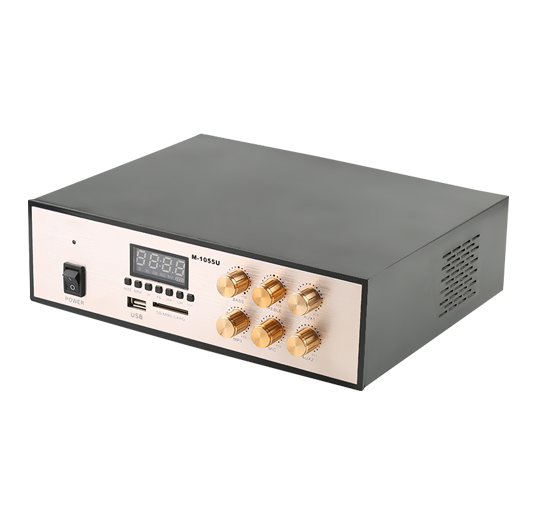The distinction between a stereo amplifier and an A/V (audio/video) receiver is rooted in their respective functions, capabilities, and intended uses within audio systems.
A stereo amplifier serves a fundamental role in audio reproduction by amplifying audio signals from stereo sources. Its primary objective is to take a low-level audio signal and amplify it to a level that can drive speakers, thereby producing sound with sufficient volume and clarity. Stereo amplifiers are optimized for delivering high-quality audio performance, typically featuring two channels (left and right) for stereo sound reproduction. They are commonly employed in audio systems dedicated to music listening, where the focus is on achieving accurate sound reproduction and sonic fidelity.
Stereo amplifiers often offer various input options to accommodate different audio sources, including analog RCA inputs, digital inputs, and sometimes phono inputs for connecting a turntable. However, their functionality is limited to amplifying audio signals, and they may lack additional features commonly found in A/V receivers, such as video processing, surround sound decoding, and connectivity options for multiple audio and video sources.
On the other hand, an A/V receiver is a more comprehensive audio/video component that serves as the central hub of a home theater or multimedia system. In addition to amplifying audio signals like a stereo amplifier, an A/V receiver incorporates built-in features for processing and switching video signals, as well as decoding surround sound formats for immersive audio experiences. A/V receivers are designed to handle both audio and video signals, making them versatile solutions for home entertainment setups.
A key aspect of A/V receivers is their ability to support multichannel audio formats and deliver surround sound experiences. They typically include built-in decoders for popular surround sound formats such as Dolby Atmos, DTS:X, and others, allowing users to enjoy cinematic audio with spatial effects and immersive soundscapes. This capability is particularly important for home theater applications, where the goal is to recreate the immersive audio experience of a movie theater.
Furthermore, A/V receivers offer a wide range of connectivity options to accommodate various audio and video sources, including Blu-ray players, gaming consoles, cable/satellite boxes, streaming devices, and more. They feature multiple audio and video inputs and outputs, as well as support for digital audio formats like FLAC and DSD. Additionally, many A/V receivers include built-in radio tuners, network connectivity for streaming audio/video content, Bluetooth, Wi-Fi, and other advanced features to enhance the user experience.
Due to their expanded functionality and versatility, A/V receivers tend to be more complex and feature-rich than stereo amplifiers. They are designed to provide a complete home entertainment solution, integrating audio and video components to deliver immersive multimedia experiences. While stereo amplifiers excel in pure audio performance and music listening applications, A/V receivers are better suited for home theater setups and multimedia systems where both audio and video capabilities are required.
The choice between a stereo amplifier and an A/V receiver depends on the specific requirements and preferences of the user, as well as the intended use within the audio system. Stereo amplifiers are ideal for music enthusiasts seeking high-fidelity audio reproduction, while A/V receivers offer a more comprehensive solution for home theater and multimedia applications, combining audio amplification, video processing, and surround sound capabilities in a single unit.


